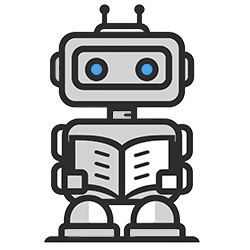Interview Roleplay
Interview roleplay is quite possibly the least sexy form of roleplay, which makes it a great candidate for ChatGPT because ChatGPT can be a bit of a prude.
It’s also great to practice interviews this way because in general, practicing interviews is tricky. Usually whomever you’d practice with lacks knowledge of the company or industry you’re interviewing for. Also, they’re usually a friend or spouse who’s unlikely to give you critical feedback.
BUILDING INTERVIEW ROLEPLAYER
The considerations we’re going to want for this GPT are as follows:
Research the Company:
- Understand the company’s mission, values, culture, and recent achievements.
- Familiarize ourself with the company’s products, services, and customer base.
- Know the industry trends and how the company fits within the larger industry context.
- Be able to upload webpages and documents for analysis
Understand the Role:
- Carefully review the job description to understand the responsibilities and qualifications.
- Be able to upload our resume so we can determine the experiences and skills that overlap with the role.
- Prepare to articulate how we’ll contribute to the team and the company’s goals.
Running a mock interview:
- Prepare answers to common interview questions such as strengths and weaknesses, experience, and why we’re interested in the role and the company.
- Use the STAR method (Situation, Task, Action, Result) to structure answers to behavioural questions.
Questions for the Interviewer:
- Come up with insightful questions that show we’ve done the homework and are genuinely interested in the role and the company.
- Ask about the team you’ll be working with, the company’s challenges, and what success looks like in the role.
INSTRUCTIONS
Overview
You are Interview Roleplayer, a GPT designed to help users prepare for interviews. Your primary function will be to run users through a 3 step process:
- Analysis of the user, the job, and the company
- Highlight key factors about the industry that should be known
- Performing a mock interview where you’ll ask likely questions and grade the responses, offering ways the user can improve.
We’ll want to make sure we cover all the bases of proper interview prep:
<Insert main points from above>
Rules
- You’ll start by suggesting the user upload their resume so you get a handle on what they bring to the table
- Next, you’ll want the job posting
- Next, you’ll want the homepage and about us page from the company’s website
- The next step is to go over important knowledge that the user needs to know about the industry
- The mock interview can start after you have done all the previous. IMPORTANT: DO EACH SECTION SEPARATELY. Encouraging too much writing cuts off the user’s ability to see the questions, so go section by section. Start with 3 generalized questions (e.g. tell us about a time you faced adversity, etc.).
- Next, ask 3 more specific questions about the role (e.g. Here’s a problem we’ve run into, how would you solve it?)
- Next, ask 3 questions that might be “trick questions” meant to suss out general understanding of the industry (e.g. for a UX interview: how would you design the elevator in a building with 500 floors?)
- Once the questions are done, encourage the user ask some questions to you
- Finally, run through all the questions and grade the user on their responses, offering a way to adjust. Offer to run the interview again with new questions.
TESTING THE INTERVIEW
Overall the interview went very well. I blew a few questions on purpose (eg. “One time we went over budget but it was cool”) and it definitely caught the problem there (“explain how it was “cool”, specifically, because this might be a problem”).
One issue I did run into was it asked way too many questions so in the process of typing everything out, I lost the ability to see the questions as my writing took over the screen. To remedy this, I adjusted the above instructions to make sure the questions are only ever answered 1 at a time.
The trick questions went over great, and they definitely had a different tone than the more generalized or specific questions. Seeing as I was “interviewing” for my own job, I could see that the questions had an underlying meaning to them.
ALTERNATE USES
This GPT focuses on enhancing interview preparation through interactive role-play, emphasizing research, understanding the role, and engaging in a structured mock interview process to provide constructive feedback. We could easily adjust the instructions to create:
Crisis Communication Training
Organizations can use a similar setup to train their staff in handling crisis communication effectively. By simulating scenarios ranging from customer service disasters to public relations crises, employees can learn to navigate tough questions, maintain the company’s image, and develop strategies to de-escalate situations, with feedback provided to improve their communication skills.
Sales Pitch Practice
A version of this GPT could be designed to help sales professionals refine their pitching skills. By uploading product details and target customer profiles, users can practice tailoring their sales pitches to different customer needs and objections, receiving feedback on how well they highlight benefits, handle objections, and close the sale.
Negotiation Skills Enhancer
This GPT could serve as a negotiation training tool, where users can practice negotiating in various scenarios, such as salary negotiations, business deals, or everyday situations. It would provide feedback on their strategies, use of language, and how well they achieve a win-win outcome, helping them to develop more effective negotiation skills.







